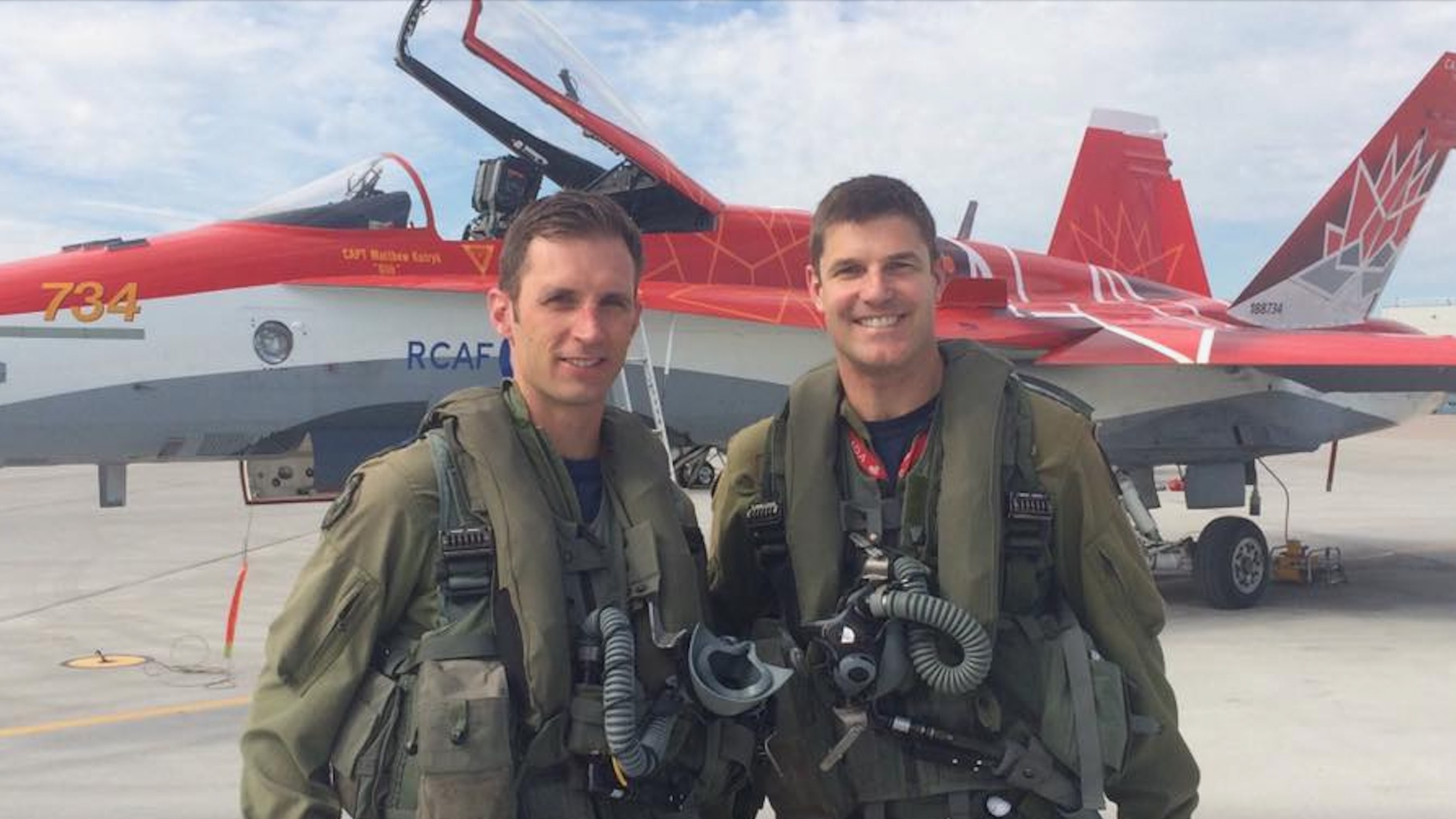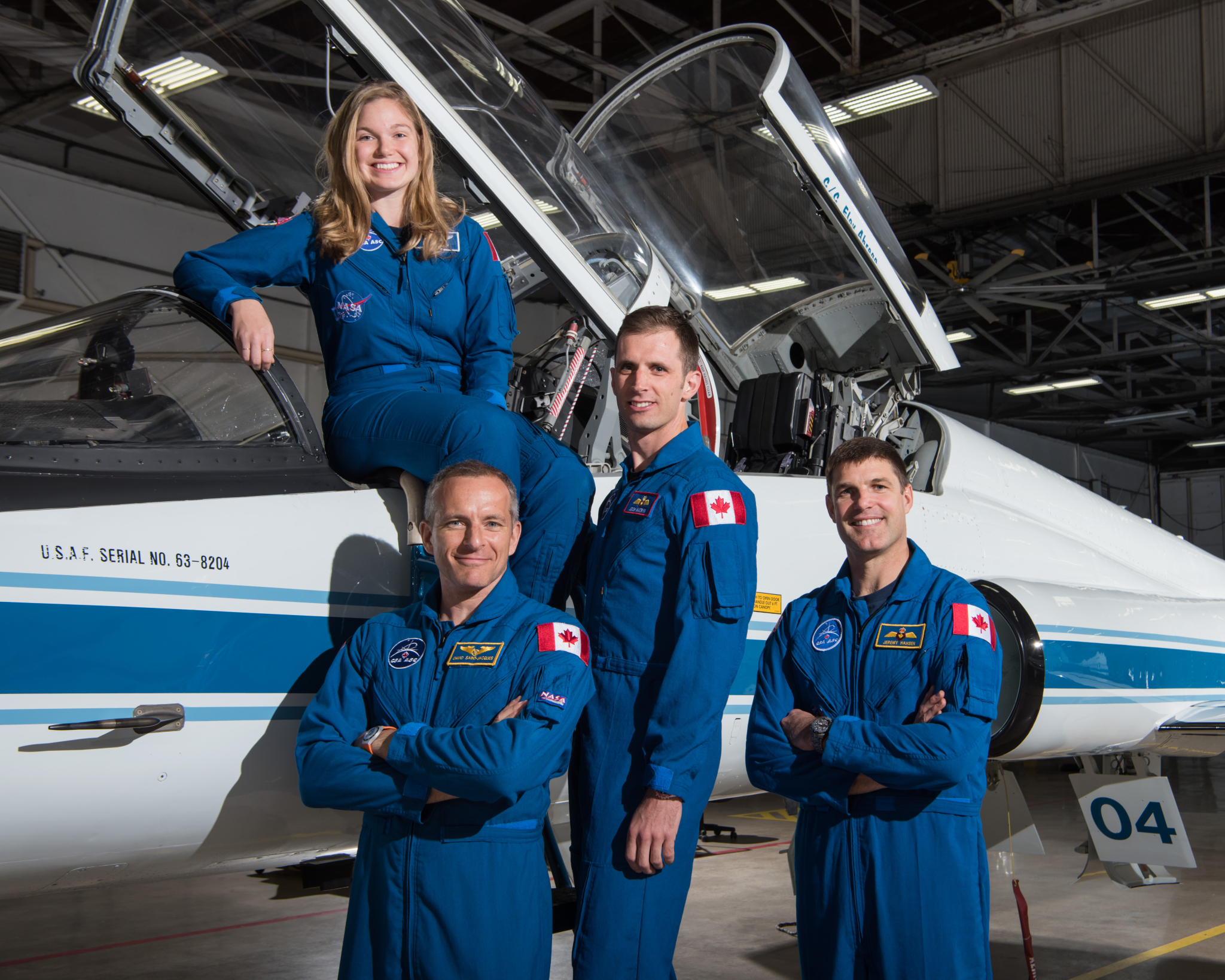What 8,000 hours flying military jets taught 2 Canadian astronauts
'There is little margin for error. Fundamentally, that's what human spaceflight is about, too.'

After 4,000 hours flying in 40 different airplane types for the military, Canadian astronaut Josh Kutryk is ready to redeploy that experience to a new type of craft.
Last month, Kutryk, a Canadian Space Agency (CSA) astronaut, was assigned to Starliner 1, the first operational crewed mission of Boeing's new Starliner spacecraft. A colonel in the Royal Canadian Air Force (RCAF), he will bring years of experience as a test pilot to evaluate Starliner both during his own mission in 2025, and also as capcom (capsule communicator) for a test mission with astronauts that's scheduled to launch next year.
"The job of a test pilot is to evaluate very critically complex systems," Kutryk told Space.com, shortly after his International Space Station assignment was made public on Nov. 22 at CSA headquarters near Montreal. "In environments that are characterized by high risk and high consequence, you can't make a mistake. And as you evaluate those systems, you have to do it with a view of the future, to make sure that people down the road don't fall into these traps of making mistakes as well."
"The job ultimately, is about being critical," Kutryk continued. "It's about buying vehicles, operating systems, and constantly evaluating them in the most critical sense that you can, so that you can feed into the redesign process and fix the issues — and make the vehicle ultimately better."
Related: Canada soars into space with new moon and ISS astronaut missions
Neither Kutryk nor his fellow CSA/RCAF colonel and astronaut Jeremy Hansen, who will fly on NASA's Artemis 2 moon mission in 2024, has been to space yet. But between them, they have 8,000 hours of flying experience under their belts. Former test pilot Kutryk acquired more than 4,000 hours on more than 40 aircraft types, and former fighter pilot Hansen has 3,860 hours in over 34 types of aircraft, according to a Dec. 7 CSA update to Space.com. (Civilian CSA astronaut and fire scientist Jenni Gibbons, who holds a private pilot's license, will back up Hansen on Artemis 2 in case he cannot make it, the CSA also announced on Nov. 22.)
The two RCAF astronauts emphasized to Space.com how helpful their military training has been in getting them prepared for space. That's even before their years of direct space experience with CSA, and alongside NASA, which is substantial for both: Kutryk has been helping to develop Starliner procedures, while Hansen managed the training schedule for the 2017 astronaut class, among usual astronaut activities such as serving as capcom and supporting other crewed missions.
Get the Space.com Newsletter
Breaking space news, the latest updates on rocket launches, skywatching events and more!
"Flying fighter aircraft is focused on performing and excelling at operating complex systems in high-risk environments, where there is little margin for error. Fundamentally, that's what human spaceflight is about, too," Kutryk wrote Space.com, during a follow-up interview on Dec. 3.
Related: Canada assigns astronauts to launch on Boeing's Starliner, back up Artemis 2 moon mission
RCAF training and education for all aspiring pilots comes through 2 Canadian Air Division (2 CAD), which spoke with Space.com about what recruits can expect. After basic training comes advanced flying skills, including aerobatics and formation flying in single-pilot and crewed cockpits. Aerodynamics, familiarity with aircraft systems (electrical and mechanical) and attention to checklists are all emphasized.
"Physically, student pilots learn to manage the stresses of flying, in particular, the additional gravitational forces that are brought on when flying certain sequences. Mentally, student pilots learn to manage information in the cockpit while maintaining overall situational awareness," representations from 2 CAD wrote in an email interview, citing input from Hansen and Kutryk in formulating the answers to Space.com.
"Although pilot training does not have the mental impact that can come with operational missions, mental resilience is tested, and pilots learn to strengthen their minds through formal training, of which the RCAF continues to refine. Both colonels Jeremy Hansen and Josh Kutryk agree that this training has given them the ability to manage risks; to adapt to any situation and develop solutions to new challenges; and to set aside the natural human fear response to rely on one's training to get through an uncomfortable situation."
All along, pilots with the RCAF learn teamwork — which naturally, is prized at the CSA and at NASA as well. Working in an isolated, confined environment like a spacecraft brings astronauts together into small groups, so they must be prepared for the situation before arriving there. (Civilian astronauts may also get such an experience — for example, in Antarctica or at sea on research expeditions, or doing hobbies such as backcountry hiking.)
The goal in both the RCAF and in spaceflight is for "respectful interpersonal relationships, [which] are critical to overcoming obstacles, solving problems, and working toward the shared objective of mission success," the 2 CAD representatives wrote. Flight training, they noted, has been ongoing in Canada for nearly 100 years and includes major efforts such as World War II and NATO expeditions.
To be sure, Hansen and Kutryk were not the first military members to become astronauts. Canadian Chris Hadfield, also a colonel, flew three times in space after a long RCAF career. Among many other duties before his orbital flights, he flew CF-18s for the North American Aerospace Defence Command (NORAD), intercepting Soviet aircraft. Hadfield commanded the ISS in 2013, performed Canada's first spacewalk in 2001 (co-installing the Canadarm2 robotic arm while doing so) and was the only Canadian to visit the Mir space station, during a space shuttle mission in 1995.

Meanwhile, Virgin Galactic's Jameel Janjua has assisted with the suborbital spaceflights of the company's VSS Unity spacecraft, although he is not an astronaut himself. A former RCAF fighter pilot and fighter weapons instructor, Janjua has been at the controls of Unity's carrier plane, VMS Eve, on three occasions: the missions Galactic 01, Galactic 04 and Galactic 05.
Other CSA astronauts who were in the military include Marc Garneau (a now-retired naval officer who flew on three space shuttle flights, and who was Canada's first astronaut in space in 1984); retired major Ken Money, and retired captain Michael McKay. Money and McKay did not fly in space, but they made many contributions to the astronaut program from the ground in fields such as medicine and robotics. (Garneau and Money were selected by Canada's National Research Council when it was tasked with managing the astronaut program, before CSA was formed in 1989.)
Additionally, CSA civilian astronauts Bjarni Tryggvason (who died in 2022 at age 76) and Julie Payette (retired) earned their military pilot captaincy using the RCAF Canadair CT-114 Tutor in Saskatchewan, air force representatives wrote on Facebook in 2017. The Tutor is the same aircraft used by the Canadian Forces Snowbirds, a flight demonstration team in Canada akin to the U.S. Navy Blue Angels.
Join our Space Forums to keep talking space on the latest missions, night sky and more! And if you have a news tip, correction or comment, let us know at: community@space.com.

Elizabeth Howell (she/her), Ph.D., was a staff writer in the spaceflight channel between 2022 and 2024 specializing in Canadian space news. She was contributing writer for Space.com for 10 years from 2012 to 2024. Elizabeth's reporting includes multiple exclusives with the White House, leading world coverage about a lost-and-found space tomato on the International Space Station, witnessing five human spaceflight launches on two continents, flying parabolic, working inside a spacesuit, and participating in a simulated Mars mission. Her latest book, "Why Am I Taller?" (ECW Press, 2022) is co-written with astronaut Dave Williams.









